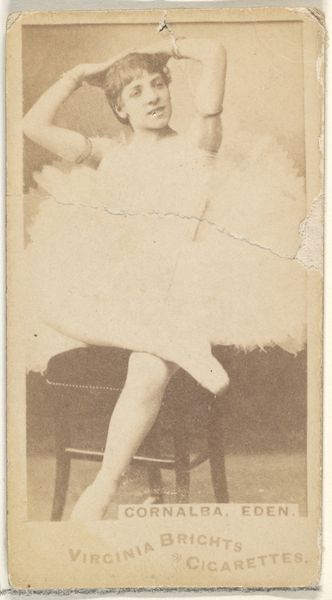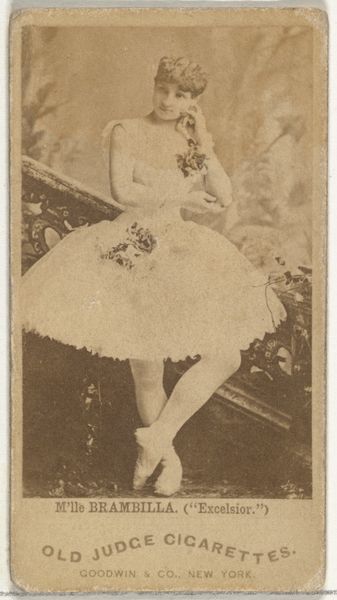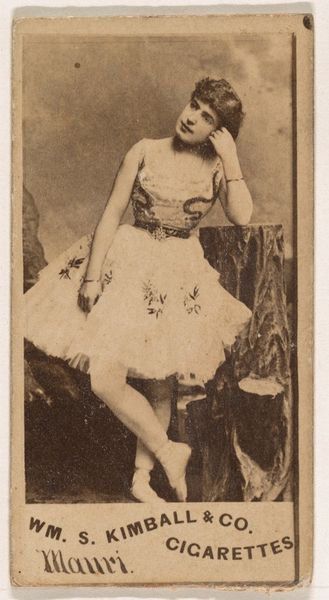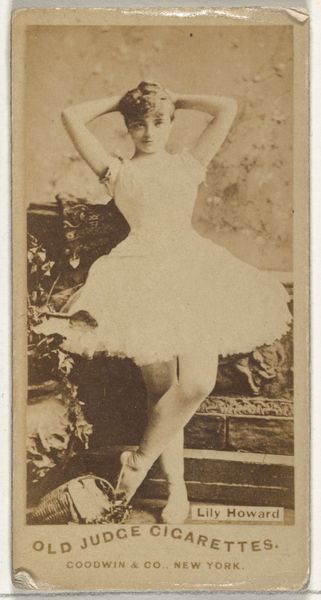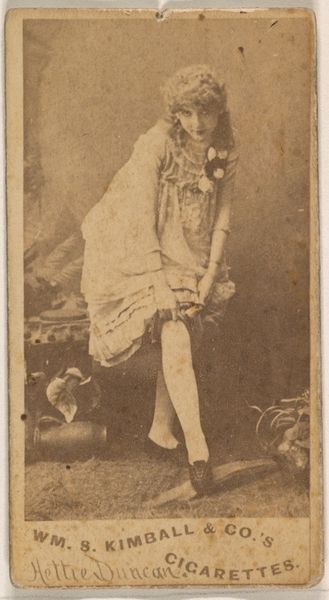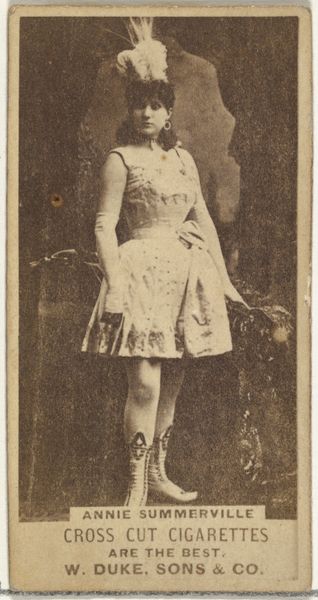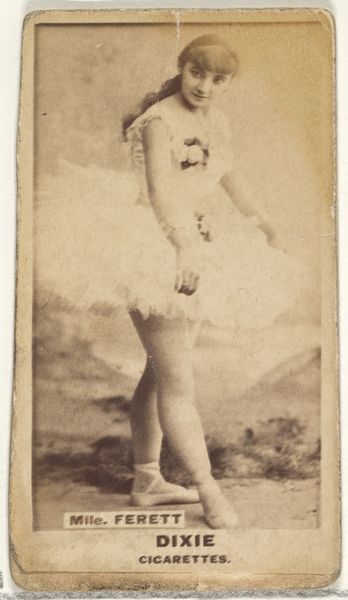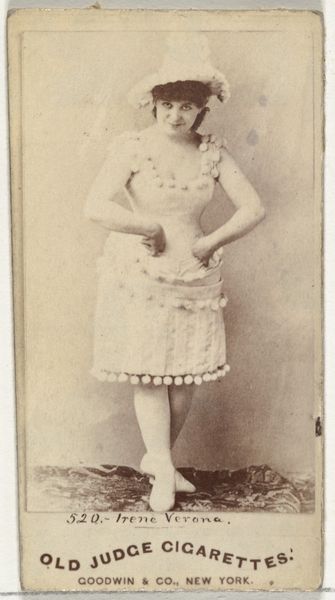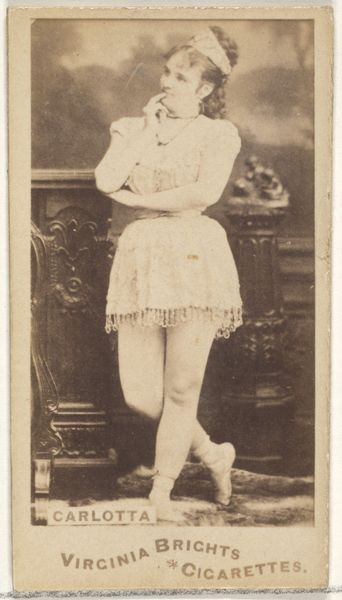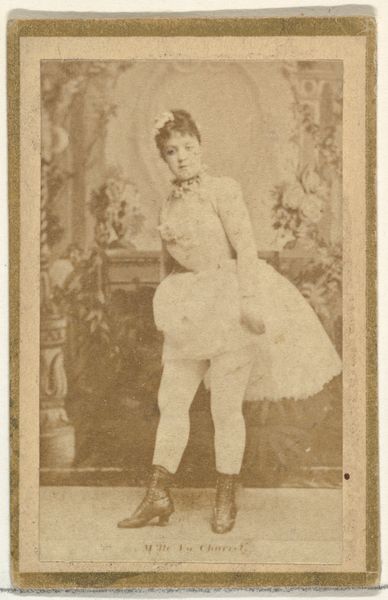
Lilie La Verde, from the Actors and Actresses series (N45, Type 1) for Virginia Brights Cigarettes 1885 - 1891
0:00
0:00
drawing, print, photography
#
portrait
#
drawing
# print
#
figuration
#
photography
Dimensions: Sheet: 2 3/4 x 1 3/8 in. (7 x 3.5 cm)
Copyright: Public Domain
Editor: Here we have a trading card from between 1885 and 1891, "Lilie La Verde, from the Actors and Actresses series," made by Allen & Ginter for Virginia Brights Cigarettes. It looks like a photograph. What strikes me is how…posed and stylized it feels. Almost theatrical, fitting for an actress, perhaps? How do you interpret this work, considering the image's historical context? Curator: Well, what narratives do you think the producers intended to convey using her image, a woman, displayed to promote cigarette sales? The symbolism is very specific: what meanings do you see in the backdrop, Lilie’s dress? Consider not just immediate visual appeal, but broader social values reflected in this image. Editor: I see the backdrop resembles a classical relief, perhaps alluding to high culture or artistic legacy. And her dress, while elaborate, seems to suggest innocence, maybe purity... contrasting oddly with a product like cigarettes. Was it an attempt to elevate the brand through association? Curator: Precisely. The deliberate visual encoding is meant to be read on multiple levels. The backdrop elevates Lilie and the brand, and the purity trope—often unjustly associated with actresses—would have been deeply ingrained, shaping societal expectations and perceptions. Tobacco companies often associated products with health. Doesn't that sound strange to our modern ears? Editor: Absolutely. It’s fascinating how much information and social commentary is packed into such a small image. I hadn’t considered how deeply these visual symbols were rooted in cultural values of the time. Curator: Indeed. And that's precisely why, when we contemplate the images that are still circulating, we might decode more meaning about our past. The symbolic resonance lingers, reminding us how consumer culture has used images of women, and continues to use those strategies.
Comments
No comments
Be the first to comment and join the conversation on the ultimate creative platform.

